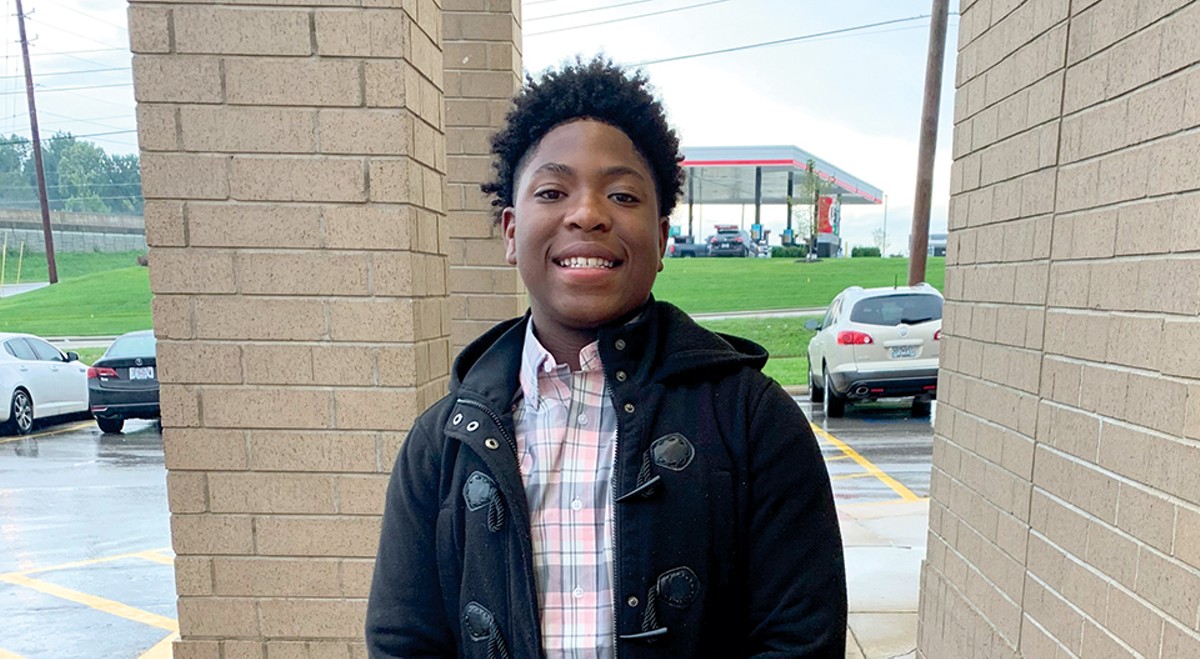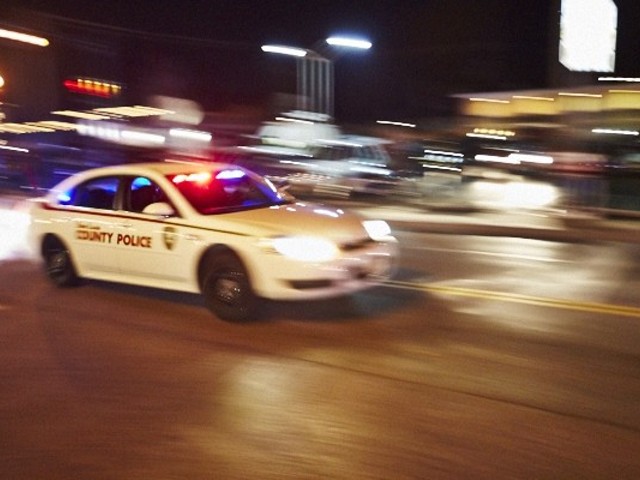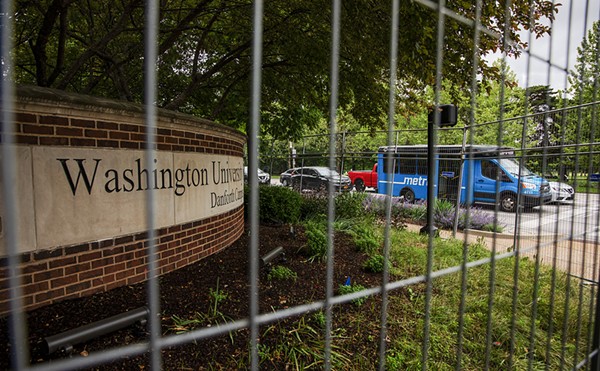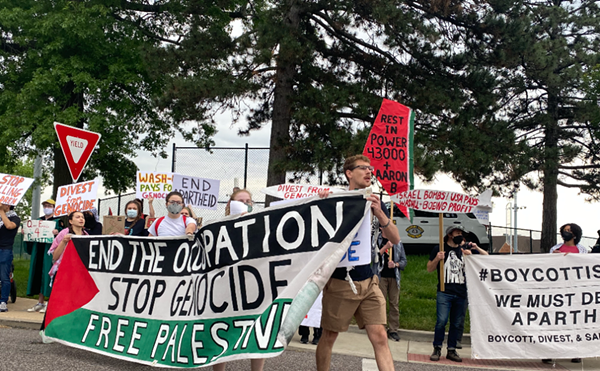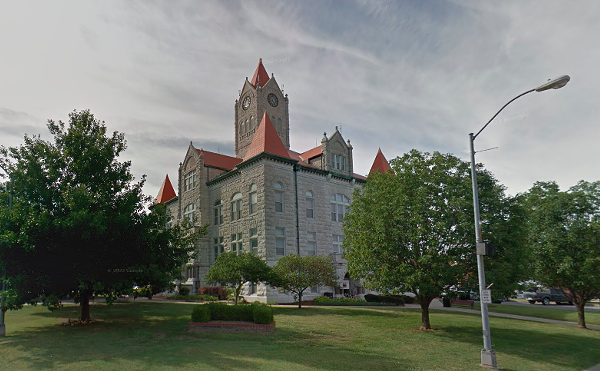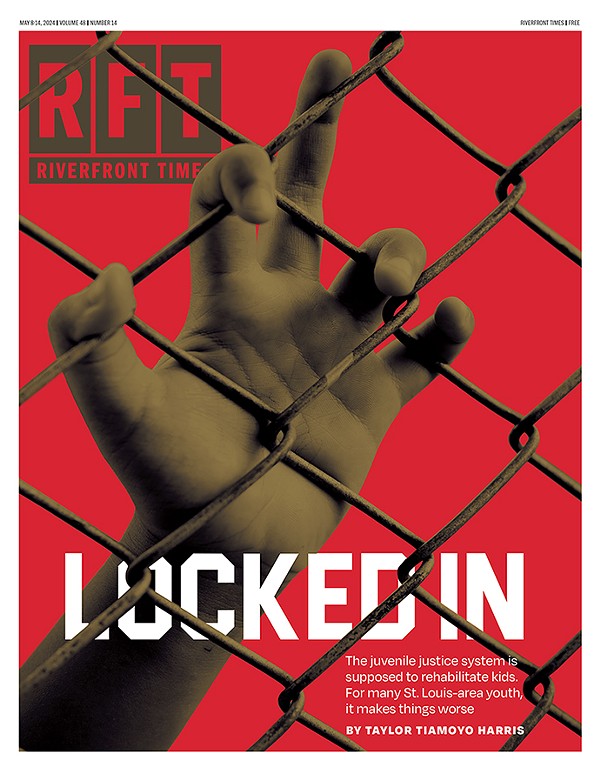He was just thirteen, but Clifford "Nunu" Swan III was afraid of death. Three of his cousins had been murdered in the past two years, and, unwilling to be next, Nunu told his older brother Donald about plans to obtain a gun.
An ex-weed dealer who'd spent his teenage years dodging north-city trouble, Donald, then twenty, rebuked him. "You don't need a gun," he counseled. "You got your hands. You can fight."
Donald always strived to protect Nunu, the soft-hearted prankster of the family. Neither of their fathers was physically around, although Nunu's dad Clifford Swan Sr. says he had a relationship with his son through the phone and Facetime. In St. Louis, the older boy helped raise the younger, orchestrating bowling and go-kart outings. When Nunu had questions — like when he wanted to mess around with a girl for the first time or needed a new joke for school — a conversation in Donald's bedroom ensued. As his kid brother's rapping skills developed, Donald pledged to be his manager.
Their mother toiled as a nurse to support the boys and three siblings, but the family rotated through about ten homes, propelling Donald into robbery, a source for clothes and other sundries. He did his first stickup at age twelve with a BB gun before graduating to handguns. After another family funeral, Donald retired his bulletproof vest and abandoned street life. At nineteen, he felt he'd beaten the odds of St. Louis adolescence.
That attitude might seem hyperbolic, if not for the realities surrounding him. Since 2012, St. Louis has led America in per-capita child murders by county, according to Centers for Disease Control and Prevention data. Put another way, Americans under the age of eighteen are eight times more likely to be killed in St. Louis than in the rest of the country. In 2019, the city witnessed thirteen child homicides, the most in a decade — until the tally spiked to seventeen last year. And though it's only March, eight St. Louis children have already been killed in 2021, including a nine-year-old boy gunned down in a car on Sunday in LaSalle Park and a teen shot in the back of the head less than 24 hours later in the West End neighborhood. In St. Louis County, where Nunu's family recently moved, the situation is similarly grim; the percentage of Black kids killed there ranks twelfth in the country.
The local situation mirrors an alarming national pattern: Youth homicides in America have stubbornly risen each year between 2013 and 2019, the last year on government record, save for a slight dip in 2018. And according to the Gun Violence Archive, a well-regarded if less-official national database, child gun killings surged last year.
A sense of consternation befell St. Louis two summers ago, after seven children younger than twelve were fatally shot, including a two-year-old and three-year-old. All were Black. Mayor Lyda Krewson offered $25,000 rewards for information on child killings, while presidential candidate Beto O'Rourke tweeted his concern about dead St. Louis kids. The collective mourning reached another crescendo this past January when a seven-year-old girl was fatally shot while sitting in a parked car in the Central West End. None of the 30 child murders in 2019 and 2020 has been prosecuted.
Despite that bloody backdrop, Donald's reassuring message seemed to resonate with Nunu during their sober conversation in the summer of 2019.
"As long as you got me, you safe," Donald promised. "You're not gonna die."
Three weeks later, Nunu's mother, Trina Houshmand, got a call from her panicked daughter: "There was a shooter. Can't no one find Nunu."
Houshmand was confused; her eighth-grade son had just called from her mother's Spanish Village apartment complex asking permission to walk to the store for a cupcake. But there had been gunshots, her daughter explained, and Nunu wasn't answering his phone. By the time Houshmand arrived at the complex, police had cordoned off the pavement. Later, at the hospital, a doctor appeared with grave news: Nunu had been fatally shot in the head. Houshmand's blood pressure rose to dangerous levels, prompting medical staff to sedate her in a room next to Nunu's.
Just beforehand, Donald was speeding to the hospital. If Nunu can just see me, he'll stay alive, he thought. Upon hearing the news, he dropped to the ground. For months afterward, he had flashbacks of Nunu lying lifeless on a hospital bed. It wasn't supposed to be my little brother. I grew up protecting him. Two days after the murder, St. Louis organizers staged a Mothers March, honoring the local children killed so far that year. When Nunu's name was read aloud, Houshmand wailed as her body quivered on the ground.
When he died, Nunu became part of a numbing national narrative. Not only are child killings rising across America, but the ages of victims are trending younger. Between 2015 and 2019 there was a 19 percent increase among thirteen-, fourteen- and fifteen-year-old murder victims compared to the previous five-year period, according to an RFT analysis. For Black Americans, the increase was 35 percent. (Black children are eight times more likely to die from homicide than white children.) After decades where the leading cause of death for thirteen- to fifteen-year-olds was a car crash, gun deaths (including suicides) eclipsed them in each of the last four years on record.
Assessing the root causes, many experts cite a lack of national research funding. In the decade beginning in 2008, the U.S. government spent just $597 per death in child firearm injury prevention research, through a paltry 32 grants, according to a recent Health Affairs study. "A thirtyfold increase ... or at least $37 million per year, is needed for research funding to be commensurate with the mortality burden," the study concluded.
"We've abandoned children to this disease," says University of Michigan Professor Rebecca Cunningham, a physician and the study's lead author. "We spend billions of dollars on cancer funding for children, which has led to cures, but we have chosen not to address this problem, and that's led to devastating consequences."
Last year, St. Louis Children's Hospital treated 150 kids for severe gunshot wounds — far exceeding recent history's previous record of 97 in 2008, according to Dr. Martin Keller, the hospital's trauma medical director. The situation, he says, has led burnt-out colleagues to quit. "The number seems to be rising each year. It's frustrating, it's exhausting, and in our minds it's something completely unnecessary.
"These are not children getting cancer or being born with a defect that can be fixed," he adds, noting that female victims are increasingly common. "We're just fixing holes that bullets are creating. We're not preventing anything."
Just as gun victims are getting younger in St. Louis, so too are kids who possess firearms, through purchase, trade or diversion from a legal owner — a clear cultural shift that's occurred within the last decade. "The youngest I had contact with was ten years old," recalls Andre Smith, a former St. Louis police detective who retired in 2018 to become a political science professor at Harris-Stowe State University. In poorer neighborhoods, he adds, "it's easier for these young kids to get a hold of a gun than a computer."

